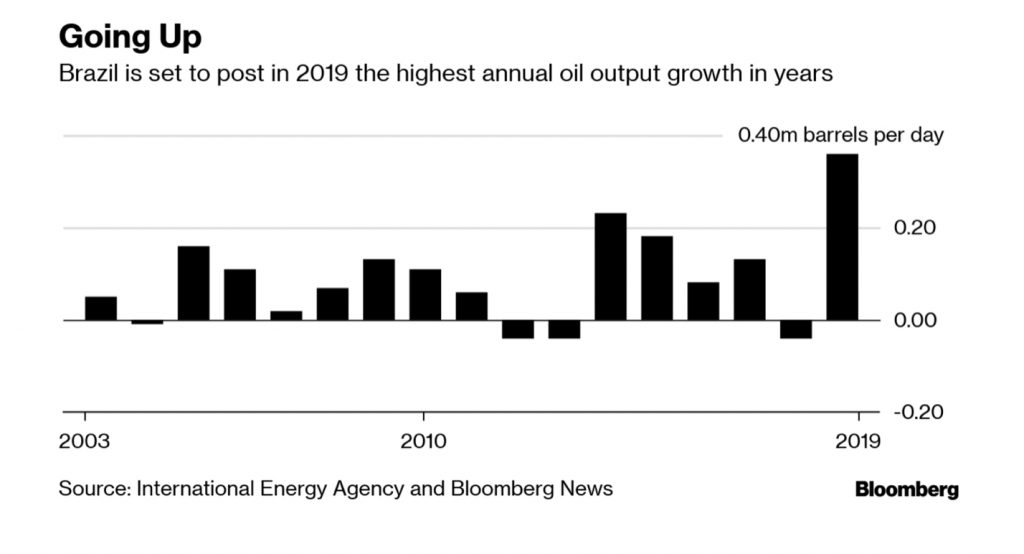Here are Sabrina Valle and Javier Blas, Bloomberg:
“Brazil has disappointed in the past, with output growth coming far below expectations because of maintenance issues, declines in mature fields, and delays installing new vessels for oil production and storage. The Tartaruga Verde field, which should have come online back in late 2017, didn’t start until June 2018. The P-67 itself was delayed several months.
Still, oil traders and executives believe this year Brazil will make good on its promises. The P-67 vessel, about 260 kilometers (162 miles) from Rio de Janeiro, will pump about 150,000 barrels a day in the next few months, when it reaches its plateau.”
“The Brazilian surge comes at the right time as the world’s oil market is hungry for the kind of oil that the pre-salt fields pump: medium-heavy crude, ideal for refining into diesel. The production cuts in OPEC and Canada, coupled with American sanctions on Iran and Venezuela, have significantly reduced the availability of medium-heavy crude, pushing its price higher relative to the global benchmark.”

Leave a Reply